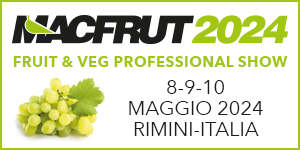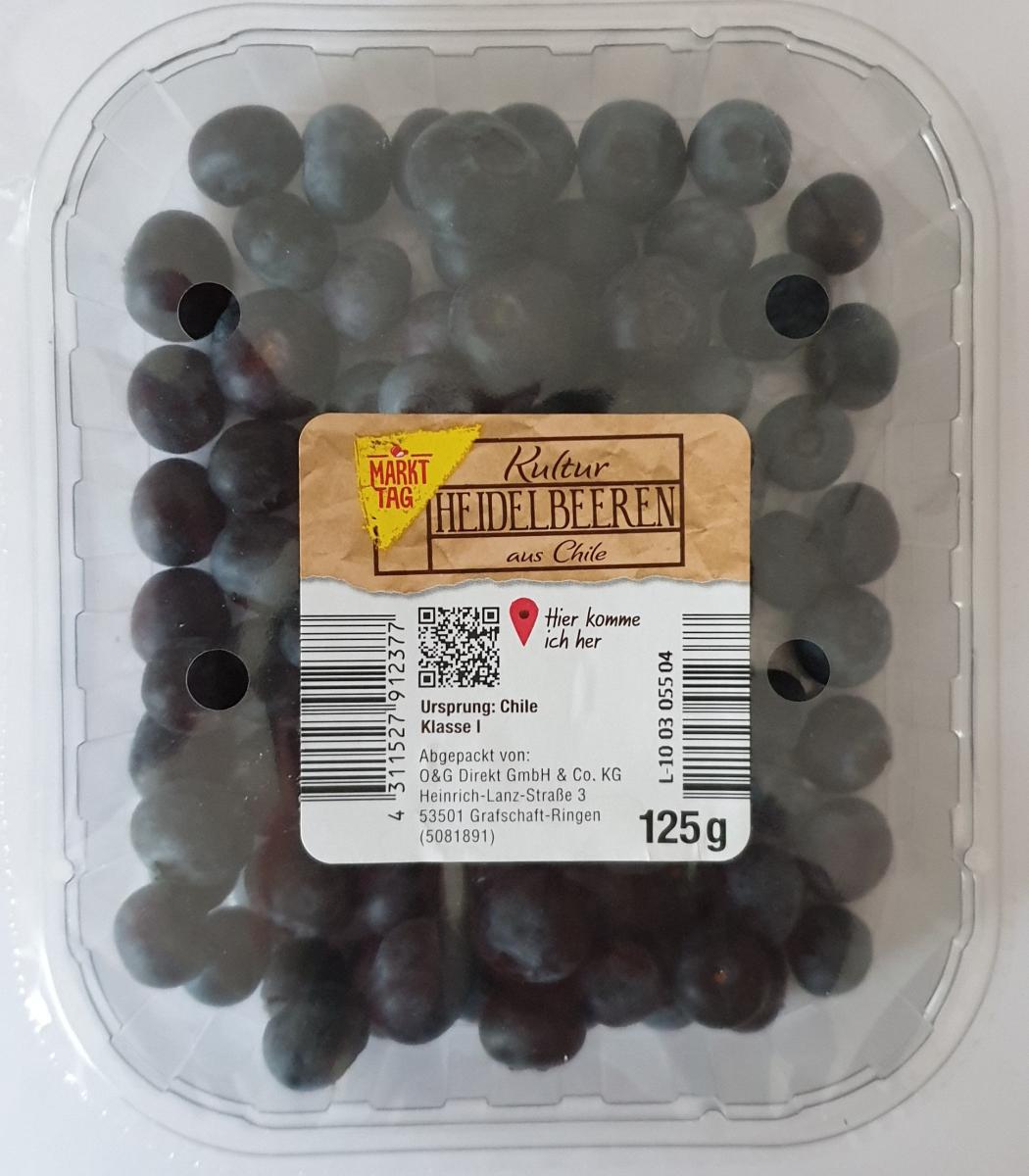Intel, the multinational processor and technology company ($75bn turnover) has partnered with a leading supplier of blueberries to demonstrate how using blockchain technology in the supply chain can help farmers deliver fresh produce to market in optimal conditions.
At the end of this article there is a short video (Italian) that explains the blockchain technology.
Summary
THE INTEL PROJECT - CURRY & CO
Growing food safety concerns in recent years have created a demand in both the private and public sectors for greater traceability of the food supply chain and better quality control. Both consumers and distributors have started to demand products that have demonstrated quality, safety and provenance (such as organic certification) for perishable products.
In July 2018, Intel partnered with Curry & Company, a large independent fruit distributor in Oregon, to evaluate how an innovative supply-chain solution could help address one of Curry's most pressing business challenges: harvesting and transporting freshly harvested blueberries , while maintaining optimal environmental conditions and providing top-notch quality assurance to its customers.
Oregon isone of the largest blueberries growing regions in the United States and the Pacific Northwest climate provides optimal growing conditions; more than 100 million pounds of blueberries are harvested in Oregon each year. Oregon farmers grow more than 20 varieties of blueberries, highly valued for their taste, appearance and health benefits.
Like other fresh fruits, however, blueberries begin to ripen as soon as they are picked, creating an environment for microbial growth and other quality deviations such as rot. blueberries are very sensitive to temperature and handling processes, which can adversely affect the quality of the fruit and reduce customer satisfaction.
Harvesting of blueberries usually takes place in the morning. After the ripe blueberries have been manually (or mechanically) removed from the bushes of blueberries, the standard process is to cool the blueberries almost immediately to just above freezing, 34⁰-35⁰F (about 1.5° C). This slows down the respiration of blueberries and extends the shelf life of the fruit from days to weeks.
Once the blueberries are cooled, they are processed and inspected, and damaged or defective berries are removed. After processing, the blueberries are then sorted and packed in small plastic containers, arranged in packages that can be stacked on pallets and stored in a refrigerated environment while awaiting customer orders.

CHALLENGES WITH FRESH FRUIT
Many manufacturing and distribution companies still use human operators to perform a number of essential tasks. Environmental data, inventory management, product inspection and processing are just a few examples of operations and data acquisition tasks that many companies continue to perform manually - an error-prone method that increases the risks and challenges of processing and distributing fresh fruit.
DRIVING INNOVATION IN AGRICULTURE
The Oregon State Department of Agriculture, recognizing the need for innovation in the agricultural sector, has worked with local businesses and city commissions, such as Curry & Company and the City of Independence, to facilitate innovative projects to improve the quality of products grown in Oregon.
Curry & Co., a locally owned and operated company in Oregon's Willamette Valley, is a leading provider of blueberries. To help farmers meet the challenges of a short harvest season and get fresh fruit safely to market and in optimum condition, Intel and Curry & Co. collaborated on the pilot project
a project that aims to monitor blueberries crops, track location and incorporate blockchain technology into the supply-chain .
ADVANTAGES OF THE BLOCKCHAIN FOR FRUIT AND VEGETABLES
Intel worked with Curry & Co. to deploy an integrated blockchain-based Internet of Things (IoT) solution to help the company solve various business issues. There are many advantages to using blockchain in a perishable goods supply chain, including:
- Provenance: increased assurance of the origin and chain of custody of blueberries throughout the supply chain, which in turn strengthens the reputation of the brand
- Food safety: enables near real-time monitoring of fruit, leading to a more proactive approach in terms of safety, quality and recalls, minimizing food waste
- Distributed archive: turns manual recording into digital and establishes a reliable data exchange between supply chain partners. The blockchain serves as a record of financial transactions, events or even environmental data acquisition.
- Security: Blockchain technology ensures that data cannot be tampered with or modified.
- Supply Chain Network Optimization: Improved visibility into the supply chain network could enable Curry & Co. to improve its logistics network and inventory turnover.
THE SOLUTION
Intel piloted an integrated IoT (Internet of Things) solution with capabilities that directly address and help mitigate the challenges associated with shipping perishable goods, using Intel® Connected Logistics Platform (ICLP) and Intel's Hyperledger Sawtooth* block chain, and Microsoft Azure*, to create a connected supply chain. The ICLP enables monitoring and tracking of environmental conditions for a variety of products, and ensures that items arrive at their destination in optimal conditions. The ICLP communicates data in real time to the cloud and simultaneously creates an unchanging record on the blockchain.
Among its many features, the ICLP:
- Allows near real-time monitoring of environmental data including temperature, humidity, light, tilt, shock and position with a tag/gateway sensor solution.
- Allows pallet level monitoring of dispatched goods to facilitate correction of the route if necessary.
- Provides near real-time position monitoring and programmable notifications (e.g., for temperature changes).
- It collects all this information and pushes it towards the blockchain to establish transparency in the supply chain and create an unchangeable digital "trail" for the fruit at every stage of the journey, from harvesting to distribution.
TRIAL STUDY
Intel piloted an integrated end-to-end IoT solution to track and trace the supply chain of Curry & Co.'s blueberries . This pilot tracked a truckload of blueberries from harvest at a local farm in Salem, Oregon, to storage and processing at Curry & Co.'s facility in Brooks, Oregon, including delivery to the customer distribution centre in Portland, Oregon.
STEP 1: COLLECTING IN THE FIELD
For the pilot, the blueberries were collected from a farm near Salem, Oregon. After they were placed on pallets and weighed, ICLP sensors were activated and placed on the pallets with the fruit so they could begin collecting data and enabling the blockchain for real-time tracking. With the sensors in place, the crop was ready to begin its journey from the farm to the storage and processing facility in Brooks, Oregon.

EXPLANATION OF DATA
The pilot's day in Oregon was sunny, so the data collected by the ICLP sensors in the field aligned with the weather that morning during the harvest. The dark blue shaded area in Figure 3 shows the temperature and humidity environment around the berries as it follows them from the farm to the Curry & Co. processing site in Brooks, Oregon.

STEP 2: PRE-REFRIGERATION
Once the truck arrives at Curry & Co.'s plant, the blueberries are immediately unloaded and placed in a pre-cooling plant where they are cooled before processing. Here they are stored until ICLP sensors indicate that the berries have reached the correct temperature and the processing line is cleared.
EXPLANATION OF DATA
The shaded blue section in Figure 3 shows the data from the ICLP sensors in the pre-chiller, showing temperatures falling below 45⁰F, which is the desired condition for storage of blueberries.
STEP 3: PROCESSING AND STORAGE
Once the queue is cleared in the processing plant, the berries are moved pallet by pallet from pre-cooling to processing, where automated and manual methods are used to remove fruit that does not meet standard quality specifications.
During this phase, the blueberries s are also packed in baskets, placed on pallets of finished goods, and then placed in a cooler, where they are stored until they are matched to a customer order. During the pilot, these blueberries were processed the day after collection.
EXPLANATION OF DATA
At some point during the pilot, the team had to remove the ICLP sensors from the fruit to avoid interfering with standard processing steps. Thus, although the ICLP sensors continued to collect and transmit data, the data were not associated with blueberries at this stage.
and did not accurately reflect the temperature of the berries (see the grey section in Figure 4).
Once processing was complete, the ICLP sensors were added back to the pallets of finished products, which were then placed in the cold room, and the sensors resumed collecting and transmitting data about blueberries and its environment.
STEP 4: DELIVERY/TRANSPORT
Once the order has been placed, the berries are taken out of the cold storage and put on the ramps for collection by the second-party logistics (2PL) transport agent. This order of blueberries was destined for a fruit distribution centre (DC) in Portland. The day after processing, the Intel team followed the driver from Curry & Co.'s dock to the DC and confirmed delivery of the blueberries.
EXPLANATION OF DATA
The GPS signals from the sensors correspond to the route the 2PL transportation agent took on his route from Curry & Co.'s facility in Brooks, Oregon, to the DC customer in Portland. As shown in the orange shaded area, the temperature sensors also indicated a slight increase in temperature once the berries were dumped onto the ramp.
CONCLUSION: CONNECTION BETWEEN PHYSICAL AND DIGITAL
This pilot has been fundamental in connecting the physical world, using ICLP, to the digital world, with the Hyperledger Sawtooth
assembly line. Using Intel technology, Curry & Co. was able to capture information about their existing supply chain, including real-time environmental and transit monitoring, paving the way for a smarter supply chain.
THE VALUE OF A CONNECTED SUPPLY CHAIN
By providing greater immediacy, accuracy and transparency than manual processes, a connected supply chain increases food safety and improves both logistics and traceability of perishable goods such as fresh fruit.

LIVE TRACKING WITH INTEL CONNECTED LOGISTICS PLATFORM
Real-time tracking of multiple elements such as temperature, humidity and GPS at the pallet level means companies can make real-time adjustments when the unexpected occurs. Real-time tracking is a standard focal point for business-to-customer shipping, but has not been integrated into systems that support the food and beverage industry. For companies like Curry & Co., real-time tracking means better control, higher quality and reduced deterioration.
Companies like Curry & Co. that regularly ship goods already have well-defined shipping processes, and Intel understood that it was important not to complicate or disrupt existing workflows and supply-chain processes. Intel also recognized that even companies with less shipping infrastructure must be able to understand and use the technology with ease.
SUPPLY CHAIN TRANSPARENCY ON THE BLOCKCHAIN
The blockchain offers peace of mind to consumers, who know they can see how their products have been treated and by whom. With growing concern over food safety issues, the blockchain adds another level of safety, making it easy to verify product history and improve trust with end consumers. Other benefits of the blockchain include:
- Enabling a supply-chain network connecting suppliers, customers, original equipment manufacturers (ODM), third party logistics transport agents (3PL), retailers and end consumers: the network will allow sensors to connect directly and seamlessly with any potential partner and promote supply-chain efficiency.
- Establish new business models enabled by joint ownership of processes between partners or even competitors, improving collaboration and trust.
- Achieve better decision making and enable additional IA applications with the data integrity and reliability provided by the blockchain.
WHAT'S THE BLOCKCHAIN?
THE BLOCKCHAIN IS A KIND OF SHARED, ENCRYPTED PUBLIC REGISTER TO VALIDATE INFORMATION AMONG ALL USERS WITHOUT INTERMEDIARIES.
DEEPEN THE BLOCKCHAIN
To learn more visit the page "La Blockchain explained simple" edited by the Observatories of the Politecnico di Milano.













